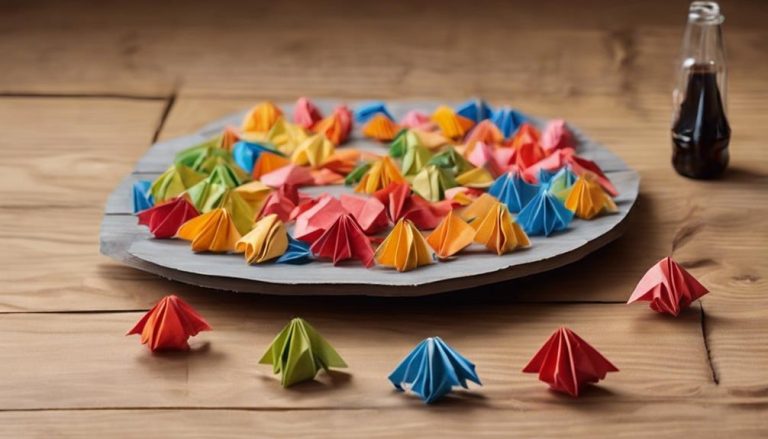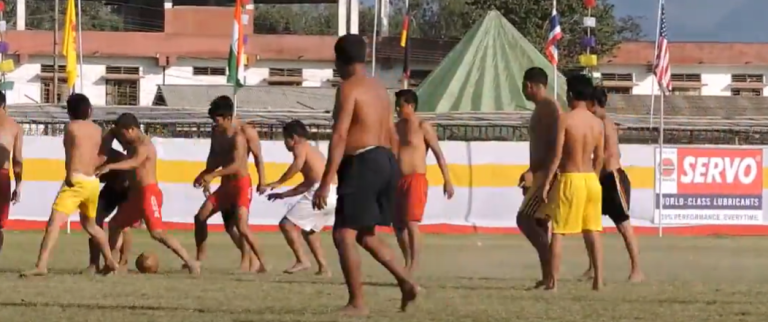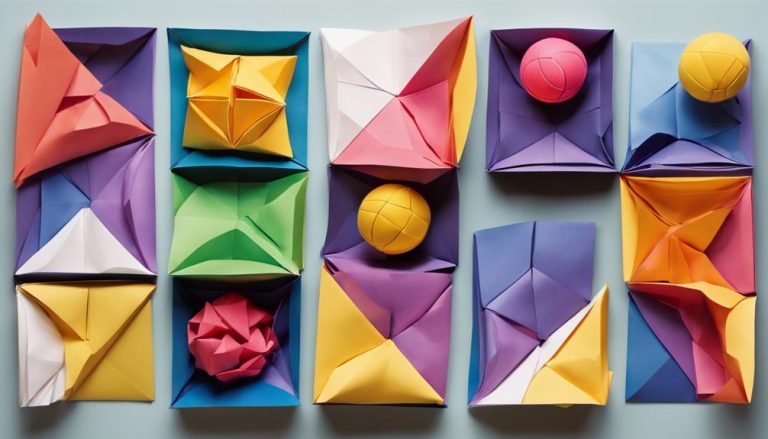General Rules of Para Badminton
When stepping onto the para badminton court, understanding the general rules is important. Court Dimensions, Equipment Requirements, Classification Categories – these are just the beginning. But don't underestimate the importance of Serving Regulations, Scoring System, Match Format, and Code of Conduct. Each element plays a significant role in ensuring fair play and competitive matches. Explore how these rules shape the dynamic sport of para badminton.
Court Dimensions
When playing Para Badminton, understanding the court dimensions is essential for competitive gameplay. The court layout in Para Badminton is similar to regular badminton, with a few modifications to accommodate the needs of para-athletes. The court is divided into two halves by a net, and the dimensions differ slightly for singles and doubles matches. In singles matches, the court is 13.4 meters long and 5.18 meters wide, while in doubles matches, the width expands to 6.1 meters. The net height is set at 1.55 meters at the edges and 1.524 meters at the center, slightly lower than in standard badminton, allowing for easier reach for players with mobility impairments.
Understanding the court layout is pivotal for positioning during a game. Being aware of the boundaries helps you strategize your moves effectively, ensuring you stay within the legal playing area. The net height is another critical factor to take into account, as it impacts the trajectory of your shots. Players need to adjust their techniques based on the net height to make sure the shuttlecock clears it successfully.
Equipment Requirements
Understanding the essential equipment requirements for Para Badminton is important for players aiming to compete effectively in the sport. When it comes to equipment specifications, Para Badminton follows similar rules to regular badminton. The racket used in Para Badminton must adhere to the regulations set by the Badminton World Federation (BWF). It should have a specific length, width, and weight to guarantee fair play and consistency among players. Additionally, the shuttlecock used should also meet the standards set by the BWF to maintain uniformity during matches.
Player safety considerations are paramount in Para Badminton. Proper footwear is essential to prevent injuries and provide players with the necessary support during matches. The shoes should have good grip to allow for quick movements on the court without the risk of slipping. It is also recommended that players wear appropriate clothing that allows for ease of movement while also considering comfort and breathability.
Classification Categories
Let's talk about the POINTS in the Classification Categories of Para Badminton. Understanding the Classification for Players is essential as it determines the level of impairment and guarantees fair play. The Eligibility Criteria Overview and its Impact on Competition further highlight the importance of accurate classification in maintaining the integrity of the sport.
Classification for Players
To understand the classification categories for players in Para Badminton, it's important to grasp how athletes are grouped based on their physical impairments. Player assessment is critical in determining the appropriate category for each player. This assessment considers factors such as muscle strength, coordination, and range of motion. Skill level is also a key component, as players are categorized to guarantee fair competition based on their abilities. The classification system aims to create a level playing field where athletes with similar impairments compete against each other. Understanding these categories not only helps in organizing competitions but also guarantees that players receive the support and accommodations they need to showcase their skills effectively. This system promotes inclusivity and fair play within the Para Badminton community.
Eligibility Criteria Overview
When considering the eligibility criteria overview for Para Badminton classification categories, it's important to understand the key factors that determine how athletes are grouped based on their physical impairments. Eligibility criteria in Para Badminton are based on player assessments that focus on the guarantee of impairments on the player's ability to compete. Athletes are classified into different categories to make certain fair competition by grouping individuals with similar levels of impairment together. The player assessment process considers factors like muscle strength, limb function, coordination, and movement patterns to determine the most suitable category for each athlete. This classification system enables athletes to compete against others with similar abilities, creating a level playing field and enhancing the overall competitive experience in Para Badminton.
Impact on Competition
Considering the player assessments and classification system in Para Badminton, the impact on competition is evident through the organization of athletes into categories that guarantee fair and competitive matchups based on their impairments and abilities. This classification system guarantees that players with similar levels of impairment compete against each other, creating a level playing field. Player strategies play a vital role in determining success within these categories, as athletes must adapt their gameplay to their specific impairments. Training techniques are tailored to improve both physical and technical skills, enhancing players' overall performance on the court. By categorizing players effectively and providing support through training programs, Para Badminton promotes inclusivity and equality in competition, allowing athletes to showcase their talents and compete at their best.
Serving Regulations
When serving in Para Badminton, remember to maintain proper technique and make sure that your serve falls within the service court boundaries. The way you serve can greatly impact the outcome of the game, so pay attention to these key points to improve your performance on the court. Mastering the art of serving can give you a competitive edge and elevate your overall gameplay.
Proper Serve Technique
Mastering the proper serve technique in Para Badminton is crucial for following the serving regulations accurately and effectively. To serve well, remember these key points:
- Grip Adjustment: Guarantee your grip is firm yet flexible to provide control and power during the serve.
- Foot Positioning: Position your feet correctly to maintain balance and generate maximum force.
- Shuttle Angle: Angle the shuttle correctly to control the direction and speed of your serve.
- Timing Accuracy: Time your serve accurately to catch your opponent off guard and gain an advantage.
Service Court Boundaries
To serve within the service court boundaries in Para Badminton, make sure your shuttle lands within the designated lines to avoid faults. When serving, it's important to pay attention to your foot placement as well. A foot fault can occur if any part of your foot goes over the boundary lines during the serve. Proper shuttle placement is key to make a valid serve. The shuttle must be hit below the server's waist and the racket's head should be pointing downwards at the point of contact with the shuttle. By following these guidelines, you can serve effectively within the service court boundaries, avoiding faults and setting yourself up for a successful match.
Scoring System
Understanding the scoring system in para badminton is essential for players to navigate the competitive landscape effectively. The scoring system in para badminton follows the same rules as in regular badminton, with a few adaptations to accommodate players with different abilities.
Here are some key points to take into account regarding the scoring system in para badminton:
- 21-Point Games: Matches are typically played as best of three games, with each game played to 21 points. However, in some cases, matches can be played as best of five games.
- Winning Margin: A player must win by a margin of two points, meaning if the score reaches 20-20, the game continues until one player leads by two points.
- Rally Point System: Points can be scored by the serving or receiving side. This system encourages players to stay focused throughout the game as every point matters.
- Strategic Considerations: Understanding the scoring system is vital for developing effective strategies. Players must adapt their game plans based on the current score, opponent's strengths and weaknesses, and psychological factors that impact gameplay.
Match Format
Exploring the competitive landscape effectively in para badminton requires a solid grasp of the match format. Understanding the match format is essential for success in this dynamic sport. Strategy tactics play an important role in determining the outcome of a match. Players must carefully consider their player positioning to gain a strategic advantage over their opponents. By analyzing the strengths and weaknesses of both themselves and their rivals, players can develop effective strategies to dominate the game.
Shot selection is another critical aspect of the match format in para badminton. Choosing the right shots at the right time can be the difference between winning and losing a point. Players must be able to adapt their shot selection based on the situation and their opponent's positioning. This requires quick thinking and precise execution to keep the game in their favor.
Additionally, game tempo is a key factor in determining the flow of a match. Players should be able to control the pace of the game to suit their playing style and disrupt their opponent's rhythm. By varying the speed and intensity of their shots, players can keep their opponents guessing and maintain control of the game.
Code of Conduct
Adhering to a strict code of conduct is imperative for maintaining the integrity of para badminton matches. In the world of sports, including para badminton, sportsmanship and following behavior guidelines are critical for creating a fair and respectful playing environment. Here are some key points to keep in mind:
- Respect for Opponents: Treat your opponents with respect both on and off the court. Acknowledge good plays and show appreciation for their skills.
- Uphold Fair Play: Follow the rules of the game and avoid engaging in any form of cheating or unsportsmanlike behavior. Remember, the essence of sports lies in fair competition.
- Control Emotions: While competition can evoke strong emotions, it is crucial to maintain control. Avoid outbursts of anger or frustration that could disrupt the match or impact your opponent's focus.
- Accept Officiating Decisions: Respect the decisions made by officials, even if you disagree. Accepting their judgments gracefully is an integral part of showcasing good sportsmanship.
Frequently Asked Questions
Are There Any Specific Strategies or Tactics That Are Commonly Used in Para Badminton Matches?
In para badminton matches, players often employ various strategy variations and tactical approaches. Mental preparation and physical adaptation are key factors. Understanding your opponent's strengths and weaknesses can give you a competitive edge on the court.
Can Players Request a Break or Pause During a Match Due to Their Disability?
Sometimes, you may need a break during a para badminton match due to your disability. Players can ask for medical timeouts to accommodate their needs. Rest periods and disability adaptations help guarantee fair play.
How Are Players With Different Classifications Matched up in Tournaments or Competitions?
In tournaments or competitions, players with different classifications are matched up based on classification criteria. This guarantees fair play and competitive balance. Athletes may have unique adaptations but compete fairly, minimizing any perceived advantage.
Are There Any Specific Training Programs or Exercises Tailored for Para Badminton Players?
For para badminton players, there are a variety of specific exercises and training programs designed to enhance your skills. These programs often involve adaptations, team collaborations, player support, and equipment modifications to cater to your individual needs.
How Do Para Badminton Players Travel With Their Equipment to Competitions, Especially if They Have Mobility Challenges?
When traveling to competitions, para badminton players master mobility challenges by making equipment transport accessible. Innovative accommodations, like specialized bags and adjustable carrying options, guarantee smooth journeys, allowing focus on the game.






